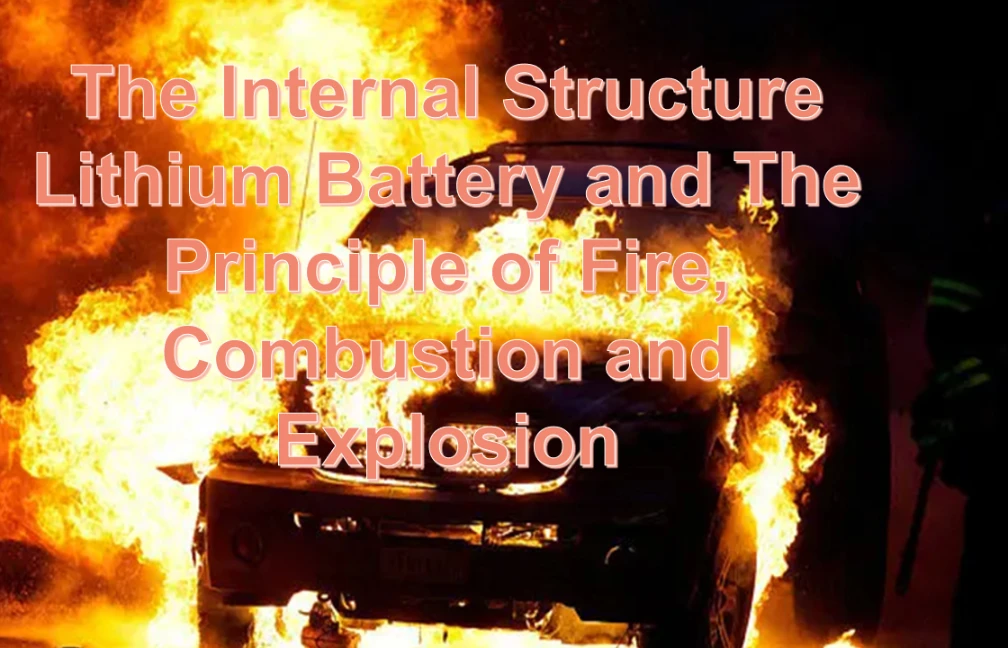
With the development of battery technology, lithium batteries have entered all aspects of work and life. Lithium batteries are everywhere, from mobile phone batteries to battery modules of new energy vehicles. But we also often hear complaints about battery usage around us, such as not being durable and depleting quickly. Do you want to know a lithium battery’s basic structure and working principle? Are you using lithium batteries correctly? Let’s talk about the internal structure of lithium batteries and the principle of fire, combustion, and explosion.
1. Structure of lithium battery
A lithium battery is a rechargeable battery that generally uses a material containing lithium element as an electrode. It mainly relies on the movement of lithium ions between the positive electrode and the negative electrode to work. Lithium batteries are positive and negative electrodes, diaphragms, and electrolytes.
1.1 Positive electrode – the active material is generally lithium manganate or lithium cobalt oxide, nickel cobalt lithium manganate material, and pure lithium manganate and lithium iron phosphate gradually fade out due to their large size, poor performance, or high cost. Electrolytic aluminium foil with a thickness of 10–20 microns is used for the conductive electrode fluid.
1.2 Diaphragm – a specially shaped polymer film with a microporous structure that allows lithium ions to pass freely, but electrons cannot.
1.3 Negative electrode – the active material is graphite or carbon with a similar graphite structure, and the conductive current collector uses an electrolytic copper foil with a thickness of 7-15 microns.
1.4 Organic electrolyte – carbonate-based solvent in which lithium hexafluorophosphate is dissolved, and the gel-like electrolyte is used for polymers.
2. Working principle of lithium battery
The following describes its working principle from the three parts of the lithium battery charging process, discharging process, and battery protection board:
2.1 Lithium battery charging process
The charging method of Li-ion battery is limited voltage and constant current, all controlled by an IC chip, the typical charging method is: first detect the voltage of the battery to be charged, if the voltage is lower than 3V, pre-charge should be carried out first, the charging current is 1/10 of the set current, after the voltage rises to 3V, enter the standard charging process. The standard charging process is: constant current charging with the set current, and when the battery voltage rises to 4.20V, it is changed to constant voltage charging, keeping the charging voltage at 4.20V.
2.2 Lithium battery discharge process
When a lithium battery is discharged, the lithium ions in the negative electrode release electrons and migrate to the lower energy positive electrode. The lithium ions, which are de-embedded from the negative electrode, migrate to the positive electrode through the electrolyte and the tiny pores of the diaphragm and are embedded in the active material of the positive electrode in a laminated structure. At the same time, the electrons are received, and the lithium ions are fixed and become stable. If over-discharged, lithium ions accumulate too much in the positive electrode, which increases the internal resistance and heats the battery, leading to rapid deterioration.
2.3 Battery protection board of lithium battery
As the name suggests, the battery protection board is mainly for rechargeable batteries (generally referred to as lithium batteries) to play a protective role of the integrated circuit board. Lithium batteries (rechargeable) need protection because the lithium battery‘s material determines that it cannot be overcharged, over-discharged, overcurrent, short circuit, and ultra-high temperature charging and discharging, so lithium batteries will always have a protection board and a current fuse.
After understanding the basic structure and working principle of lithium batteries, the next step is to talk about the causes of lithium battery fire and combustion explosion.
Lithium batteries have become an indispensable part of people, and we often see some of the various safety accidents caused by lithium batteries, the most impressive than the lithium battery generated by the explosion, fire, and other phenomena. So what is the cause of the lithium battery fire burning explosion?
Lithium batteries contain a rare metal called “lithium”. This is a very reactive metallic substance that can react with water and air in some violent ways. If a lithium battery is to explode, three conditions need to be met:
- Have enough temperature
- There must be flammable substances (antioxidants)
- Have oxygen
When the lithium battery has enough power, take a battery and short its positive and negative poles. It will generate a lot of heat at the moment of short-circuiting, and the heat has a lot to do with the internal structure of the battery. Specifically, one of the leading causes of fires inside lithium-ion batteries is damage to the separator separating the positive and negative electrodes. If this component fails, a short circuit occurs when the positive and negative electrodes come into contact. When this happens, the electrolyte, which consists of a series of organic solvents, tends to heat up and eventually catch fire.
As lithium ions move between electrodes, they undergo electrochemical deposition, creating lithium dendrites. Lithium dendrites are tiny tree-like structures that “grow” in the form of needle-like protrusions. Lithium dendrites can cause perforation damage to the separator.
In addition to punctured and broken separators, thermal runaway is another major cause of lithium-ion battery explosions and fires. In this phenomenon, the high temperature outside causes an exothermic reaction inside the battery to increase its temperature further. This self-reinforcing cycle that leads to overheating could eventually lead to an explosion.



